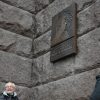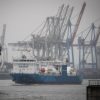Throughout the coronavirus pandemic an abiding fear had stalked the world’s most vulnerable populations. Millions of people displaced by conflict in the Middle East watched with alarm as Europe and the west withered under a caseload that stretched first-world healthcare systems to their limits. They saw field hospitals being set up in capitals. Governments buckling under the strain. The developing world offering aid to the developed.
It seemed inevitable that the contagion would reach those less able to absorb its impact. And now, as second and third waves of Covid-19 surge around the globe, worst fears are being realised. Several months into the crisis, the virus has crept into the populations of refugees and internally displaced people, where stopping its advance will be close to impossible. Up to 15 million people across the region, many of whom were already at risk of disease, now face a rampant spread through their communities.
Numbers of infections in camps across Iraq, Syria, Lebanon and the Palestinian territories have risen sharply throughout September. The spike in cases is beginning to outstrip the surges in those countries far better placed to deal with the aftermath. Cramped living conditions in refugee camps, limited hygiene facilities, medical care and education about the virus’s dangers do not bode well as winter approaches.
The flow-on effects of Covid taking hold are troubling the UN’s refugee agency, UNHCR. “This is also causing a poverty pandemic, that will result in serious protection risks,” said Rula Amin, the organisation’s regional communications spokesperson. “People are struggling to feed their children, or to send them to school. Their are issues with early marriage, child labour. There is also an economic crisis, which is plunging deeper and deeper and this will have serious long term effects.
Coronavirus threatens to turn aid crises into ‘humanitarian catastrophes’
Read more
“And of course there are widespread health issues with the capacity of host communities already struggling. This capacity will be massively overstretched if this outbreak becomes more prevalent. How will they be able to treat and service such large numbers of cases?”
Amin says the number of regional Covid infections among the refugees it monitors has risen to close to 1,000. The fear is that limited reporting capacity means the real figure is substantially higher.
The alignment of factors has left heads of aid agencies deeply troubled. North-western Syria, where up to 4 million people, many of them internally displaced, are crammed into a corner of a broken country, is seen as one of the most at-risk parts of the world.
“Nearly 10 years of conflict have decimated the health system leaving even basic care out of the reach of many, let alone treatment for Covid,” said Misty Buswell, Middle East policy and advocacy director for the International Rescue Committee. “More than 65% of the population have fled their homes due to the conflict and are living in overcrowded camps and settlements, exposed to the elements, where social distancing is nearly impossible.
“With winter arriving in the coming months, it’s urgent to contain the current outbreak and get the situation under control before it reaches catastrophic levels.
“In north-west Syria, cases are increasing dramatically. We fear that this is only the tip of the iceberg in terms of the true scale of the problem. Testing capacity is insufficient, and [fewer] than 9,000 tests have been administered to date. But lack of testing is just one of the many challenges people in north-west Syria are facing.”
With aid dollars drying up, and a global response to Covid stretched in all directions, communities have been forced to deal with the response by turning inwards. “We’ve been making masks with sewing machines and sterilising all the tents as often as we can,” said Ibrahim Darwich, an elder in an informal community in Idlib province, just south of the Turkish border. “They tell us the solution is soap, but don’t forget that many people can’t even afford that, let alone being able to isolate if you’re sick. Culturally, it’s a problem to do that anyway.”
Idlib’s camps for internally displaced people account for about 20% of those who had travelled from elsewhere in Syria to the country’s last anti-government stronghold, where hospitals have largely been destroyed over the past five years by Syrian and Russian jets. The rest of the region’s displaced communities are living in informal homes or settlements, where health and wellbeing are much harder to track.
Monitoring remains difficult elsewhere in the region: in Syria’s north-east, where large numbers of Kurds fled a Turkish incursion last October, and across the border in Iraq, where Yazidis remain encamped in the Kurdish north more than six years on from an attempted genocide by Islamic State. Further south, up to 300,000 Mosul residents remain in settlements, prevented from returning to their homes.
In the Palestinian territories, a situation once considered manageable is increasingly a cause for concern.
“Until July, we had [fewer] than 200 reported cases of Covid-19 among Palestine refugees in the region: West Bank, Gaza, Syria, Lebanon and Jordan,” said UNRWA commissioner-general Philippe Lazzarini. “Today we have over 7,800 confirmed cases among Palestine refugees and nearly 800 deaths. These communities are economically vulnerable and politically and socially marginalised. Many live hand-to-mouth and are daily-paid workers. We now regularly hear from Palestine refugees that they would rather catch corona than die of hunger. Their vulnerability is very acute.”
UNHCR says the over-the-horizon effects of the pandemic are likely to be acute. According to Amin, “50% of refugee girls are at risk of not returning to school”. She adds: “There is a high level of awareness among refugees about trying to do everything possible to avoid catching this virus. People understand what’s at stake here, but there are real challenges in overcrowded places. There is a problem with the testing capacities and protective gear, capacity of hospitals, proper nutrition.”
Suha Najjar, a displaced Iraqi north of Mosul, said her husband had become infected in July and was taken to a regional hospital. “If he stayed, I would have been infected with him, and gladly,” she said. “Separating families is worse than dying together.”






















































Свежие комментарии